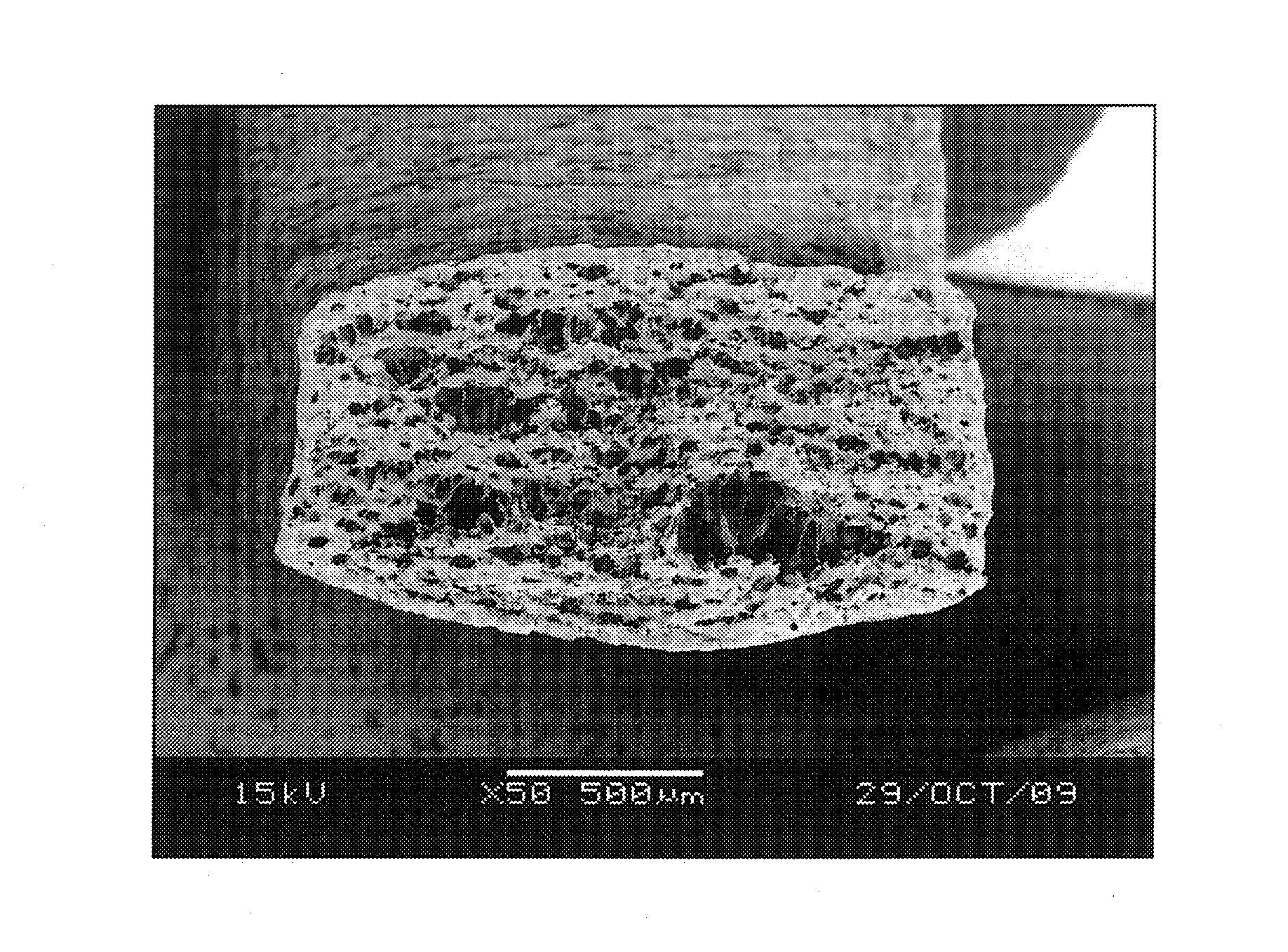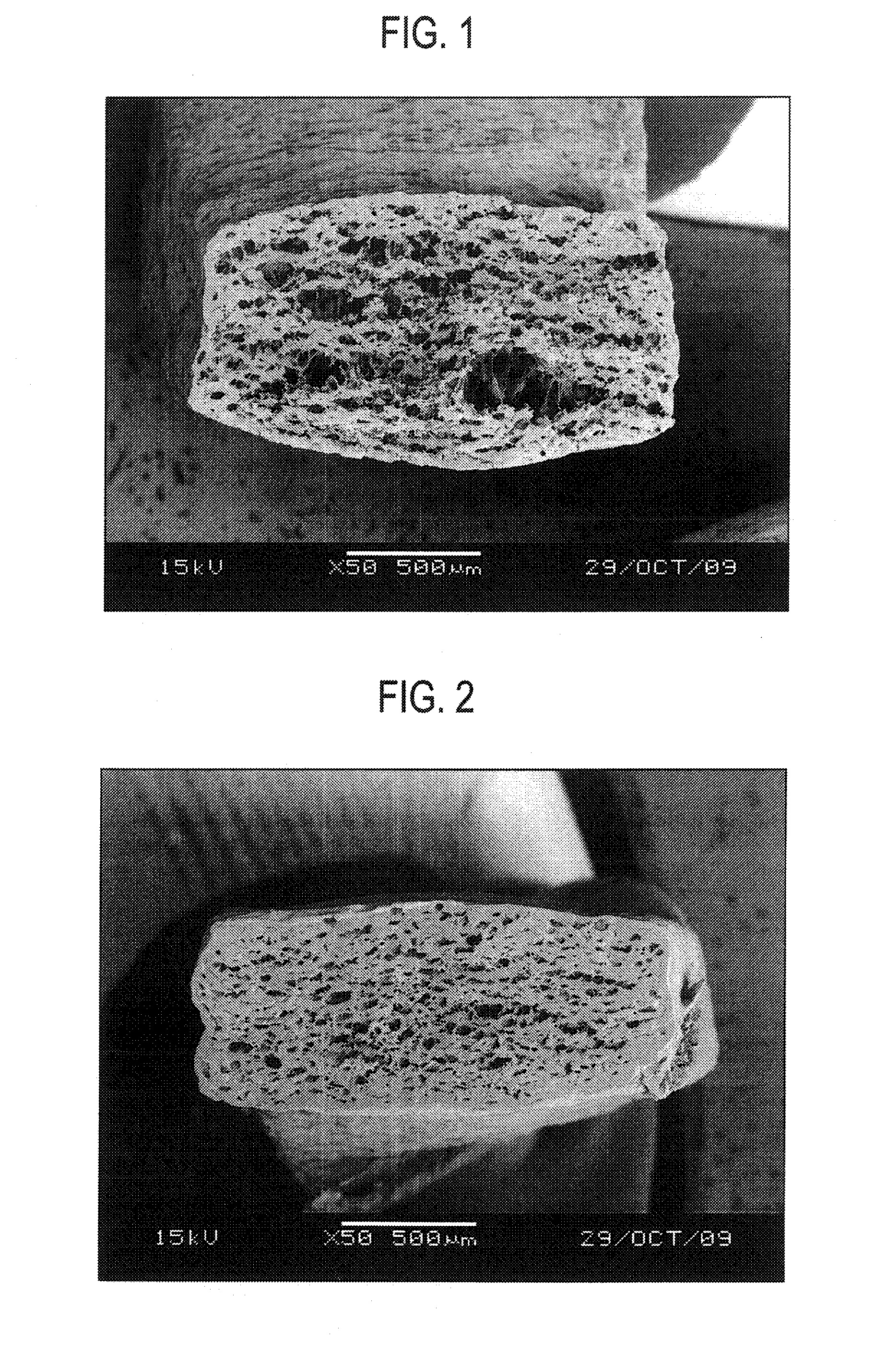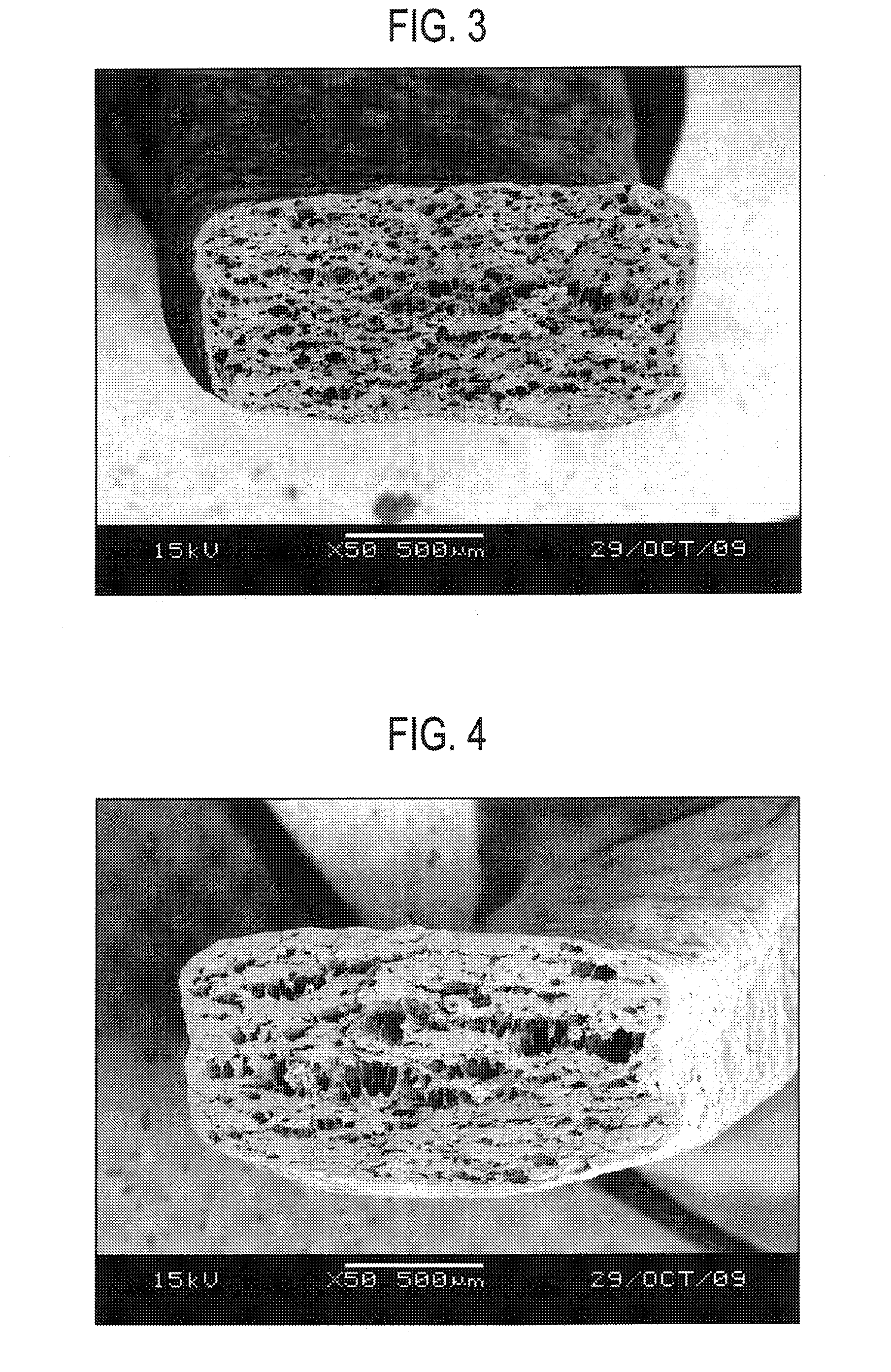Method for producing instant noodles dried by hot air stream at high temperature
a high temperature, hot air stream technology, applied in the direction of food ingredients as flavour affecting agents, baking, bakery products, etc., can solve the problems of fried noodles, unsatisfactory products, and insufficient oily taste of dried noodles, etc., to achieve rapid drying and swelling, less caloric value, and moreish taste and texture
- Summary
- Abstract
- Description
- Claims
- Application Information
AI Technical Summary
Benefits of technology
Problems solved by technology
Method used
Image
Examples
examples
The present invention is described below in further detail based on a series of preliminary experiments and examples. However, the present invention should not be construed as being limited by the examples described below, and all manner of modifications are possible without departing from the scope of the present invention. In the following description, unless stated otherwise, the units “% by weight” are abbreviated as “%”. Further, water content values are recorded as the average of a series of values obtained by breaking the noodle strands into small pieces, placing the pieces in a hot air circulating thermostatic dryer at 105° C. for 4 hours, and measuring the reduction in weight caused by the drying.
First, methods of adding an edible oil to the noodles were investigated in detail, by investigating methods that involved spaying the oil onto the noodle strands, methods that involved mixing the oil into the raw material flour, and methods that combined these two techniques.
experiment 1
Preliminary Experiment 1
A method of adding an edible oil to the noodles was investigated by spraying the edible oil onto raw noodle strands that had been cut using a typical method used in the production of instant noodles, and then investigating the effect of the edible oil on the taste and texture of the noodles. Specifically, the investigation was performed in the manner described below.
(1) Production of Dried Noodles
900 g of wheat flour was dry-blended with 100 g of tapioca starch to prepare a raw material flour. To this raw material flour was added 330 ml of a mixing water in which had been dissolved 15 g of salt, 2 g of alkaline mineral water and 0.2 g of a carotene pigment, and the resulting mixture was mixed for 15 minutes in a normal pressure mixer to prepare a noodle dough. This noodle dough was rolled using a rolling machine and then cut using a cutting blade of a square blade No. 20, yielding noodle strands with a thickness of 0.77 mm.
Next, an edible oil was sprayed unif...
experiment 2
Preliminary Experiment 2
Two methods of adding an edible oil to noodles were investigated, either by kneading the edible oil into the raw material flour, or by kneading the edible oil into the raw material flour and then also spraying the surface of the resulting raw noodles with additional edible oil, and the effects of these methods on the taste and texture of the noodles were then investigated Specifically, the investigations were performed in the manner described below.
(1) Production of Dried Noodles
900 g of wheat flour was dry-blended with 100 g of tapioca starch to prepare a raw material flour. To this raw material flour was added 330 ml of a mixing water in which had been dissolved 15 g of salt, 2 g of alkaline mineral water and 0.2 g of a carotene pigment, 20 ml of an edible oil (equivalent to 2% by weight based on the total weight of the raw material flour) was then added, and the resulting mixture was kneaded for 15 minutes in a normal pressure mixer to prepare a noodle dou...
PUM
 Login to View More
Login to View More Abstract
Description
Claims
Application Information
 Login to View More
Login to View More - R&D
- Intellectual Property
- Life Sciences
- Materials
- Tech Scout
- Unparalleled Data Quality
- Higher Quality Content
- 60% Fewer Hallucinations
Browse by: Latest US Patents, China's latest patents, Technical Efficacy Thesaurus, Application Domain, Technology Topic, Popular Technical Reports.
© 2025 PatSnap. All rights reserved.Legal|Privacy policy|Modern Slavery Act Transparency Statement|Sitemap|About US| Contact US: help@patsnap.com



